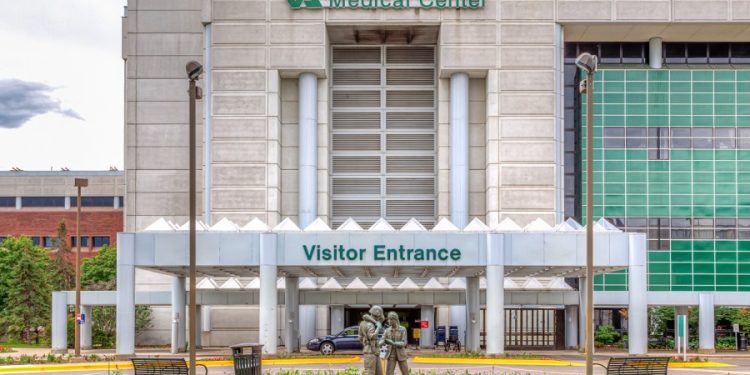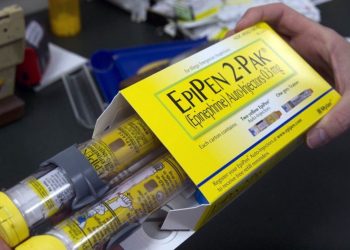Crucial health programs will continue to operate during the federal government shutdown, but many services will halt or be significantly less efficient as staffers are furloughed, based on contingency plans in place for the Department of Health and Human Services (HHS).
The HHS states in its plan that it expects 32,460 employees to be furloughed during the shutdown, while retaining 79,717 employees. Roughly 15,000 retained employees will be kept on to perform activities required or implied to be necessary by law.
Ultimately, the department estimates that 41 percent of its total staff will be furloughed.
Agencies partially exempted from the shutdown include the Administration for Strategic Preparedness and Response, the National Institutes of Health (NIH), the Centers for Disease Control and Prevention (CDC) and the Food and Drug Administration (FDA), though many of their activities will be suspended, according to the department.
Many of the protected activities during a shutdown are ensured through the Antideficiency Act, which allows for voluntary service of federal employees in emergencies dealing with the “safety of human life or the protection of property.”
Only 25 percent of NIH staff will be retained, and almost all administrative activities will halt, along with basic research and the admission of new patients at the NIH Clinical Center in Bethesda, Md.
The FDA will fare better, retaining about 86 percent of its staff, though applications for new products cannot be accepted during a shutdown, meaning approvals may be delayed.
Staffers across different agencies dealing with mandatory activities like Medicare and Medicaid will also be retained, as well as those tasked with constitutional duties like preparing the Trump administration’s fiscal 2027 budget.
Activities related to contracts, grants, Freedom of Information Act requests, data collection and analysis will lapse during the shutdown. The HHS specifically noted that CDC communication regarding public health information will be hampered and oversight over Medicare and Medicaid contractors will not be provided.
Within the Centers for Medicare and Medicaid Services (CMS), 53 percent of staffers will be retained. The agency’s survey activities overseeing health care facilities will be suspended apart from complaints dealing with “the most serious incidents of resident or patient harm.”
Some policy and rulemaking in the CMS will pause, as well as outreach and educational initiatives.
While it remains unclear how long the shutdown will last — the 2018-19 shutdown went on for 35 days — reimbursements for Medicare and Medicaid are expected to be ensured for the relative long term.
“The language in the CMS plan is that they have advanced appropriation funding through the first quarter of fiscal 2026, which is quite a bit of time,” Caleb Quakenbush, associate director for the economic policy program at the Bipartisan Policy Center, told The Hill.
More than 77 million people in the U.S. are enrolled in either Medicaid or the Children’s Health Insurance Program. Nearly 69 million people are enrolled in Medicare.
Customer service inquiries and services that beneficiaries may have become accustomed to could be impacted.
“For people in traditional Medicare, access to most Medicare benefits through telehealth (aside from behavioral and mental health services) reverts to the more limited use that existed prior to the pandemic, since funding for expanded telehealth services expired on September 30,” according to the health policy nonprofit KFF.
“Before the pandemic, Medicare telehealth services were limited to people living in rural areas. As a result, other traditional Medicare beneficiaries will now need to travel to see their providers in person in most cases.”
Accurate and on-time Social Security payments are expected to continue during the shutdown, with 88 percent of the Social Security Administration’s (SSA) staff being retained.
“The functions of the excepted employees will remain largely the same as those described in our most recent plans. We are excepting staff to support our information technology (IT) programmatic applications and infrastructure and our fraud prevention activities related to the timely and accurate payment of benefits to the public,” the SSA states in its contingency plan.
Cost-of-living adjustments, however, may be delayed as a result of the shutdown. As The New York Times reported, that figure was expected to come out in mid-October from the Bureau of Labor Statistics, but the agency is expected to cease operations due to the shutdown.
Hanging over the government shutdown is the threat of more mass layoffs of federal health employees. According to the CDC’s contingency plan 1,563 of the 8,742 staffers who are furloughed are in reduction-in-force (RIF) status.
The agency has been put through the wringer in recent months, facing a deadly shooting at its headquarters in Atlanta; losing key leaders to either firings or resignations; and losing 600 employees in an August layoff.
FDA Commissioner Marty Makary reportedly said in a video message that employees in his agency had been exempted from possible layoffs during the shutdown because they are in the “business of public safety.”
Other major agencies like the NIH, the CMS and the FDA have not indicated reduction-in-force plans during the shutdown.
The Hill has reached out to the Office of Management and Budget on any additional RIF plans at the HHS during the shutdown.
With many staffers retained for necessary services and reimbursements expected to continue until next year, the true impact of layoffs will rest on how long it takes for Congress to reopen the government.
“I think there’s sort of a cost of delays in research programs, things being put on pause, like research activities and what I understand are continuing applications and new activities. And so, if this continues for a very long time, I think the risk is there to the quality of research and progress of research starting to be impacted,” Quakenbush said.
“I think if this is a day or two, the disruptions are going to be very minimal. But if this gets prolonged, then I think you start to see some more severe consequences, and some of that shows up through federal workers being impacted, workers not being paid,” he said.














